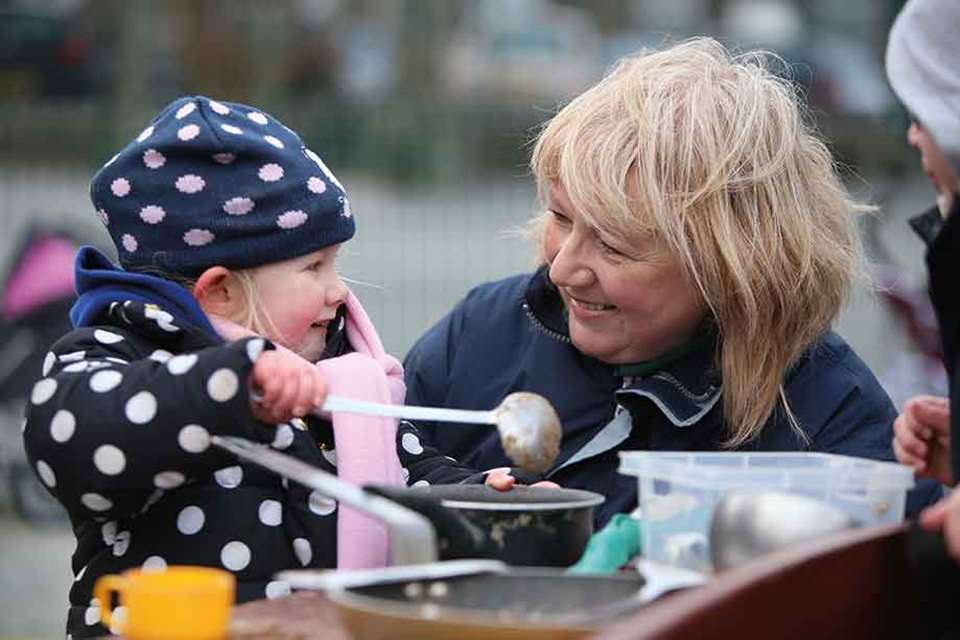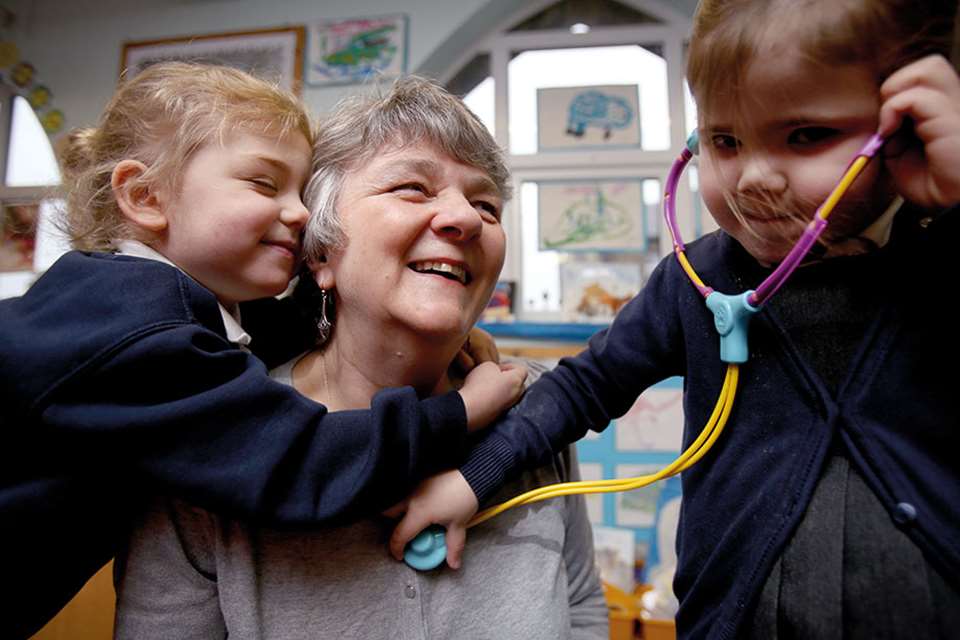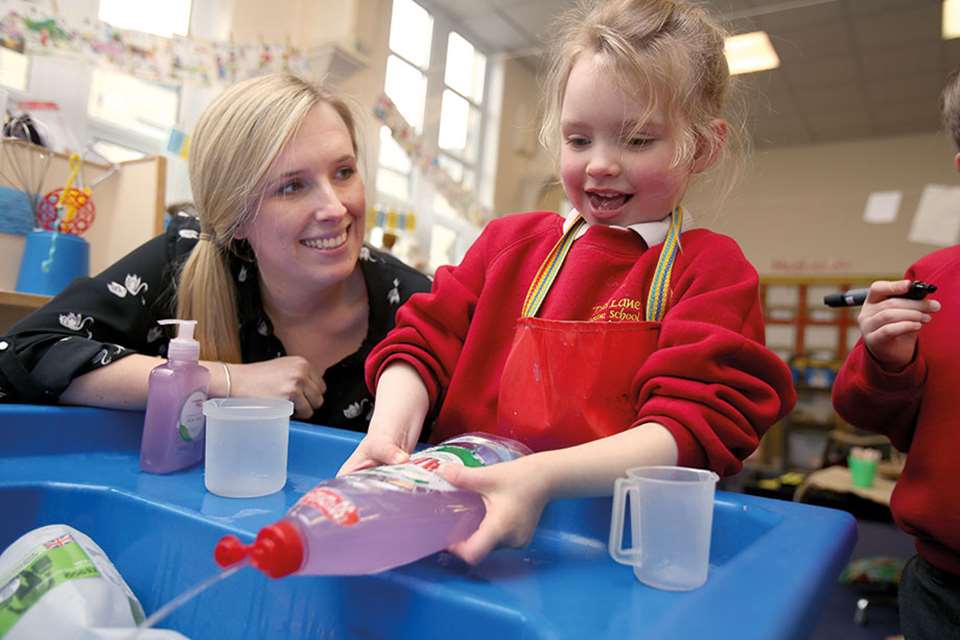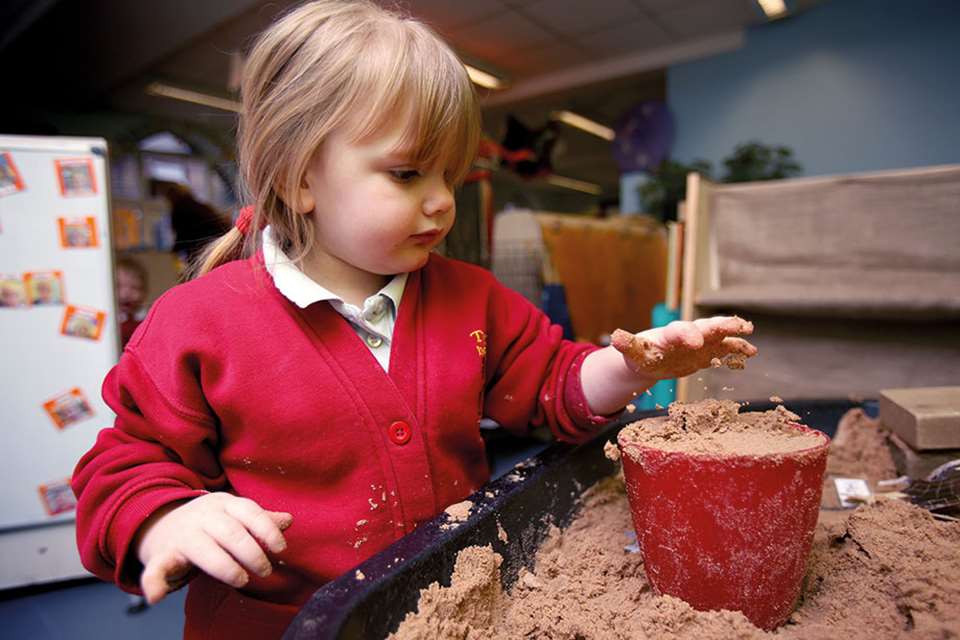EYFS Best Practice in Schools - No pressure!
Jan Dubiel
Monday, June 26, 2017
Rather than obsess over whether activities are free-flow, child-led and so on, teachers should consider if they constitute effective learning and empower the child as a learner, says Jan Dubiel

Delivering the best outcomes in literacy and maths for children within the EYFS rests on the same principles and pedagogy as other areas of learning. Nothing within the approach needs to change.
As with all aspects of early learning, the successful acquisition of literacy and maths knowledge and skills should be viewed as a process that hinges on practice, repetition and revisiting ideas, so enabling the child to ‘internalise’ these new concepts and use them is a range of ways.
Success depends too on a child having a range of other skills, knowledge and learning behaviours, principally those within the Prime Areas and the Characteristics of Effective Learning (CoEL). And the long-established early years pedagogy of embedding these skills and knowledge in meaningful contexts and children’s interests remains the invaluable means of ensuring success.
Although it may sound counterintuitive and self-contradictory, good outcomes in literacy are not achieved by the endless drilling of specific skills, such as phonic recognition, the ability to blend and segment, letter formation, and key word recognition – just as success in mathematics doesn’t hinge on number recognition, formation and number facts.
Of course, these aspects are important in their own right. However, research included in The Hundred Reviewby Early Excellence(1, 2) was categorical that long-term success in literacy and maths rests with a child’s effective development within the Prime Areas of PSED, Communication and Language and Physical Development, and the CoEL.
Creating confident literate and numerate children is the shared ambition of everyone in education. But the irony of the current pressure within schools is that prioritising specific technical skills and knowledge – especially to the detriment of opportunities to embed aspects of the Prime Areas and CoEL – is much less likely to bring success than well-established early years pedagogy.
TEACHING AND LEARNING
What emerged in The Hundred Review is that much of the current pressure stems from confusion over what constitutes ‘teaching’ within early years – despite Ofsted’s comprehensive and well-articulated definition of it. Generally, it was found that schools’ understanding of ‘teaching’ was often more aligned to a ‘traditionalist’ interpretation rather than the Ofsted definition.(3) This makes clear that teaching is not purely a ‘top down formal model’, but rather consists of a range of behaviours and actions that adults use to enable and facilitate children’s learning and development.
It is a message that all EYFS practitioners need to embrace – every action taken, every decision made impacts in some way on children’s learning and the outcomes that we wish for them. Adding to the confusion about ‘teaching’ is practitioners’ labelling of learning activities and their efforts to establish a balance between child-initiated (‘play’) and adult-directed (‘teaching’) activities.
Unfortunately, what appears to have happened is that anxiety over achieving this elusive ‘balance’ is sometimes taking precedence over the (Ofsted-defined) teaching that is, or should be, taking place. Too often the ‘type’ of activity, and the adult’s role within it, is given greater attention than establishing its true learning potential and how best to support that learning. In short, ‘labelling’ activities affects how practitioners respond and react, and this can affect the quality of learning and teaching.
As a result, practitioners have sometimes become reluctant to intervene and give direct instruction in ‘play’ activities, so missing out on vital moments to extend and develop the child’s understanding. Or they have become reluctant to deviate from the prescribed objective in activities defined as ‘adult directed’, even if the child, or group, takes the theme on a different learning trajectory.
In fact, neither of these types of ‘controlled’ response necessarily delivers effective teaching and learning. Our questions shouldn’t be, ‘Is this a play activity? An adult-directed activity? Self-initiated? Supported? Facilitated? Free-flow? Objective-led? Child-led?’ and so on. Rather we should free ourselves from this restrictive terminology and simply ask, ‘Is this effective learning and teaching? Is what I am doing (or not doing) enabling and empowering this child as a learner?’
Such questions are critical in literacy and maths, especially when these subjects dominate the curriculum and are taught by focusing on a set of very specific skills. Otherwise, we run the risk of practitioners both missing opportunities for effective teaching and overplaying the direct instruction of particular skills.
What we urgently need to take on board is that effective teaching and learning, whatever the area of learning, exists on a spectrum that needs the appropriate amount of ‘direct instruction’ and the appropriate opportunities for the child to make sense of and ‘own’ that knowledge.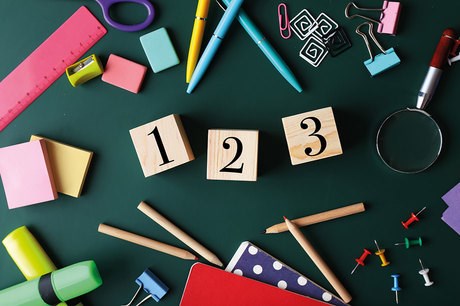
PRINCIPLES INTO PRACTICE
One of the central findings of The Hundred Review was the ignorance of early years pedagogy among non-EYFS colleagues and stakeholders. So, for best practice to occur, early years practitioners must gently, but firmly, address those sceptical or critical voices.
We have to cite the research that identifies the key skills and attitudes underpinning effective learning in literacy and maths. And we need to articulate the sheer volume of what could be described as ‘literacy’ and ‘mathematical’ learning and teaching in any EYFS setting:
The child lifting a huge block to complete a castle is specifically using the gross motor skills that refine into fine motor skills – and this is, in addition to everything else, a handwriting activity.
The child describing his new hamster, how it feels and how it twitches its nose, is developing his vocabulary, which he will later use in his writing – this is a literacy activity.
The child carefully allocating a plate to each soft toy in the domestic role-play area for a pretend meal is using their knowledge of one-to-one correspondence – this is a counting activity.
The child joyfully watching water overflow from a container is exploring the nature of full and empty – this is a capacity activity. And so we could go on. Every day in every setting, an infinite number of these episodes occur. The issue is not that literacy and mathematics learning do not happen, but rather they need to be made visible and their importance acknowledged and stressed – especially to those who have not developed the eyes to see it happening.
Learning environment
For these kinds of episode to take place continually throughout the day, the learning environment needs to be planned and structured carefully and skilfully. Of course, children do not conveniently break down their learning into the three Prime and four Specific Areas. So, continuous provision needs to incorporate lots of intriguing and open-ended resources and scenarios – that will open up opportunities for developing language and vocabulary, spontaneous storytelling and understanding and using print, but also lend themselves to being counted, measured, weighed and arranged.
Direct teaching
Throughout, it is important that we don’t lose sight of the need to teach literacy and mathematics skills and knowledge directly. Our alphabetic and numerical systems have no innate logic, so need to be presented to children in a way that will secure these odd codes in their working memories, for them to then use and to explore.
What is important is that the teaching is effective and practitioners avoid the trap of ‘overkill’, so:
- Make sessions short, focused and direct. Children will concentrate and their interest is likely to be sustained when they know that instruction times will be short.
- Remain focused on what you are intending to teach. Practitioners can sometimes lose sight of the teaching objective by over-elaborating sessions and introducing too many props.
- Evaluate the effectiveness of the activity in supporting good outcomes – rather than what type of activity it is.
Adopt strategies underpinned by the principles of the EYFS, and avoid fads and gimmicky approaches that have increasingly become a feature of practice in many EYFS settings. Although some of these are relatively harmless and, used in professional ways, may indeed have a positive impact (although no research has been done to validate the claims), they are not in themselves solutions to the challenges of effective teaching.
Always remember: ‘Effective teaching in YR [the Reception year] is a complex process, resulting from the experience of highly skilled and knowledgeable professionals enabled to act in a flexible and responsive way. Good outcomes for children are not achieved when teaching in YR is reduced to a simplistic, linear, cause and effect methodology, nor when YR practice is reliant on purely unstructured access to provision.’(1)
MORE INFORMATION
Stewart N (2011) How Children Learn: The Characteristics of Effective Early Learning
Fisher J (2016)Interacting Or Interfering? Improving Interactions in the Early Years
Grieshaber S and Macardle F (2010)The Trouble with Play
Ephgrave A (2012) The Reception Year in Action
Wyse D and Parker C (2012) The Early Literacy Handbook
Jones M and Twani J (2014) Let’s Talk About Maths: Exciting Ideas to Develop Children’s Language and Love of Mathematics from an Early Age
REFERENCES
1. Dubiel J and Kilner D (2017) Teaching Four & Five Year Olds: The Hundred Review of the Reception Year in England. Early Excellence
2. Pascal C, Bertram T and Cole-Albäck A (2017) The Hundred Review: What research tells us about effective pedagogic practice and children’s outcomes in the Reception year
3. Early Years Inspection Handbook (2015) and School Inspection Handbook (2015)


